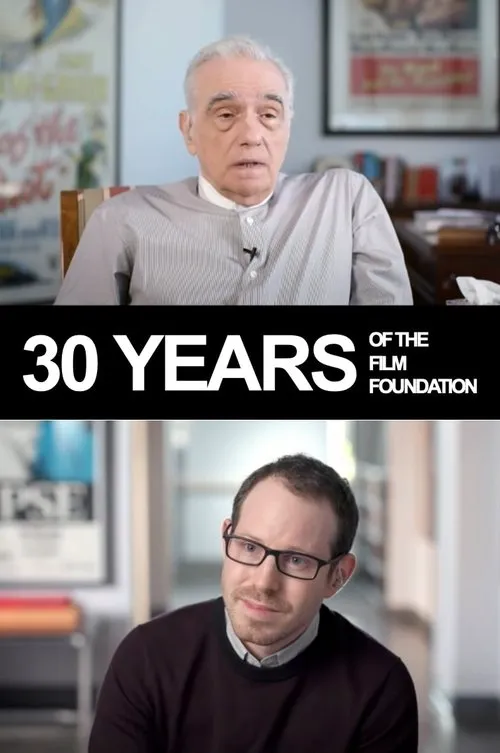30 Years of the Film Foundation: Martin Scorsese and Ari Aster in Conversation

Plot
In the intimate and insightful conversation captured for "30 Years of the Film Foundation: Martin Scorsese and Ari Aster in Conversation," two cinematic masterminds join forces to discuss a lifelong endeavor that has become a cornerstone of the film world: The Film Foundation. Founded by Martin Scorsese in 1990, this nonprofit organization has tirelessly worked to safeguard and showcase the rich, often imperiled legacy of motion-picture history. As the conversation unfolds, Scorsese and Aster engage in a thought-provoking exploration of the Film Foundation's origins and the critical role it has played in preserving films from bygone eras. The film's opening establishes the setting for their remote discussion, hinting at the unique circumstances under which they found themselves recording the conversation in 2020. Undeterred by the physical distance separating them, the two filmmakers effortlessly delve into the intricacies of their shared passion, as Aster poses probing questions that allow Scorsese to elucidate the foundation's mission and the reasons behind its inception. Throughout the conversation, Scorsese's dedication to the preservation of cinema is palpable, and his words convey the profound importance he attributes to safeguarding film history for future generations. For Scorsese, the establishment of The Film Foundation represents a crucial step in countering the erosion of film stocks and the degradation of film prints, both physical and ephemeral, that has threatened the longevity of cinematic artifacts for decades. His efforts, coupled with those of his fellow filmmakers and institutions, have ensured that an increasingly significant portion of the world's cinematic heritage remains accessible for audiences today. The conversation gradually shifts towards the various ways in which The Film Foundation collaborates with institutions and artists, working together to identify, restore, and showcase films at risk of being lost forever. Aster queries about the process of selecting films for restoration and the complexities involved in preserving the original aesthetic of such artifacts, demonstrating his own deep appreciation for the painstaking labor required to breathe life back into aging cinematic relics. Scorsese's response highlights the foundation's meticulous approach, often relying on input from experts ranging from archivists to film historians, to identify the most pressing preservation priorities. One particularly poignant aspect discussed during the conversation revolves around Scorsese's encounters with the works of early cinema pioneers such as Abel Gance, Luis Buñuel, and F.W. Murnau, whose groundbreaking films have captivated audiences with their innovative storytelling and artistic expression. Scorsese shares his reverence for these visionaries who dared to experiment and shape the medium, leaving behind a legacy of enduring cinematic beauty. As Aster engages with Scorsese's reminiscences, it becomes clear that, despite the decades that have passed, the filmmaker's fascination with the early pioneers remains undiminished, an enthusiasm that continues to inspire his tireless efforts to ensure their works endure through the passage of time. Aster poses questions about the foundation's relationship with the broader film industry, probing the extent to which it has influenced the way contemporary filmmakers think about preservation and the creation of new, often ephemeral works. The response Scorsese offers underscores the symbiotic relationship that has developed between The Film Foundation and the evolving film world, where a new generation of creatives increasingly acknowledges the significance of preserving cinema's rich historical tapestry. Throughout the conversation, both Scorsese and Aster display an unwavering commitment to preserving the cinematic heritage that has shaped their craft. As they navigate the complexities of film preservation, it becomes evident that their collaboration is about more than merely safeguarding celluloid relics – it's about ensuring that the art form as a whole endures, adapting to the changing landscape of artistic expression and technological advancements.
Reviews
Recommendations




